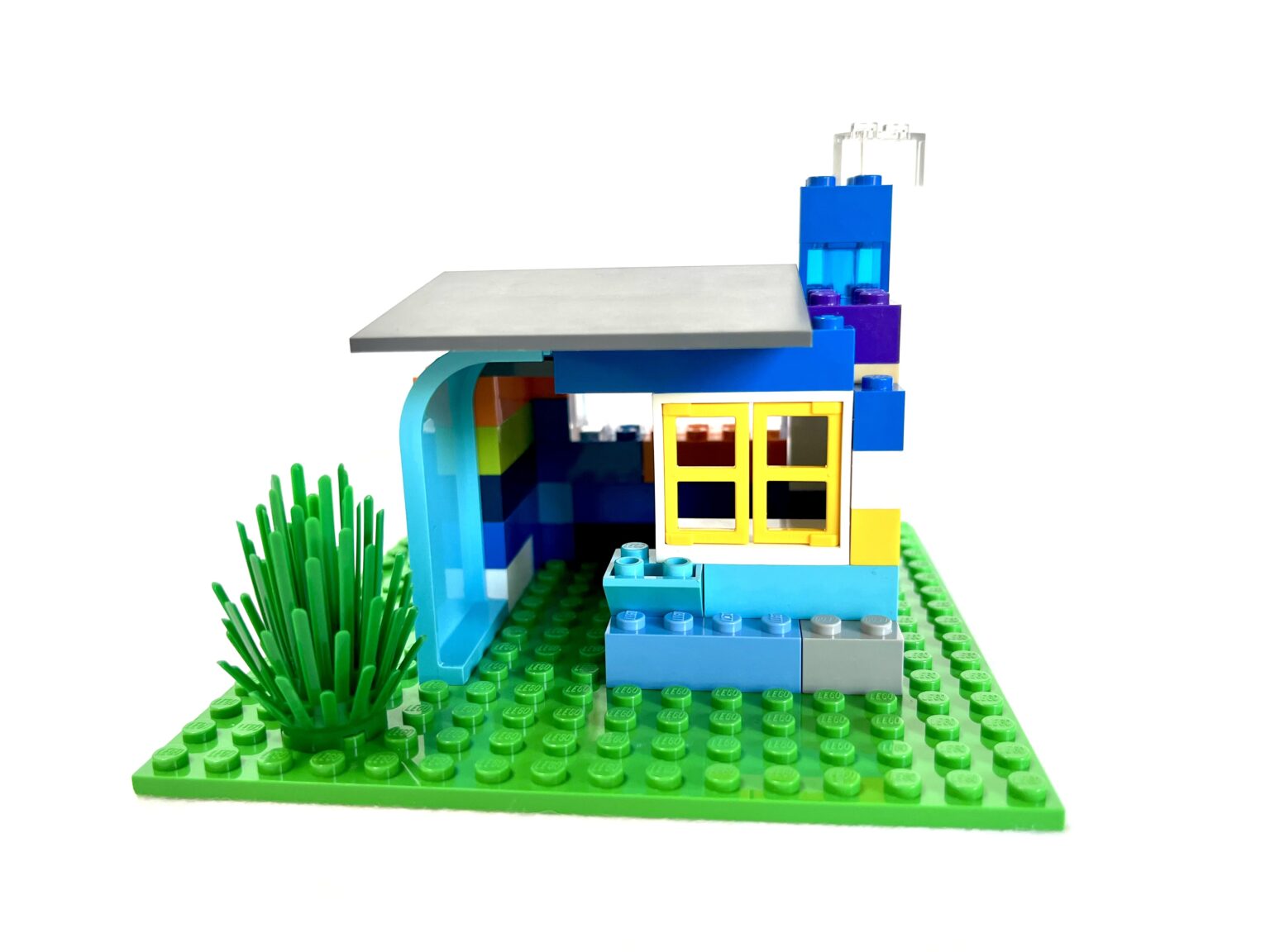Games – Build a model with a dice
Together, we build a model. The dice decides how we build because it shows our actions. The aim of the activity is to create structured play in which we can negotiate how we build our model.

Procedure
Framework
Suggestion for introduction
We create a motivating environment for the children.
For instance, we can say: ”Today, we practice building together and we try to use what we have already learned to reflect on the activity together. Maybe we learn something new about each other, like how we can share good ideas. Together, we find a model to build, e.g. a house or a zombie. We roll the dice and decide how to build the model from the roll of the dice. We take turns at rolling the dice which shows us how we should build. On the dice, there are three rules of building:
- We land on blue (or 5 & 6): We fin a blue brick and place on the model.
- We land on red (or 3 & 4): We exchange one brick for another.
- We land on green (or 1 & 2): We choose two bricks to place on the model.”
Time
The activity can be adapted to the framework of one lesson and varied according to the time available and the children’s prerequisites.
Materials
We need a dice which can be either a normal one or a colored one from Lego or Jenga. We also need construction materials, like Lego, wooden blocks, or Bakoba.
During the activity
During the play session, the children encounter challenges and successes, where we can stop and help spot what is difficult or what is going well. We can do this in several ways:
Reflection routines
When we get the opportunity to reflect together with the children on what challenges or discoveries arise along the way, we can use one or more reflection routines. It could be, for example, a learning metaphor with a social strategy that we practice, an emoji that describes the feeling we have right now, or a rating of how well we think the building is going. In this way, a reflection routine can help to show and put into words the experiences that the children have during the play session.
Facilitating questions
We can ask facilitating questions to the children along the way, as they naturally arise in the building process. In this way, we facilitate the play session so that we continue the play and at the same time learn something from it. For example:
- I see that you have stopped building. I wonder how we can continue from here?
- I see that you have encountered a challenge. Should we try to solve it together?
- Try to notice what you are doing right now. Do you think this is a collaborative strategy?
Show and Tell
Finally, in the play session, we give a Show and Tell of our construction, so that we have the opportunity to share our experiences, reflections, and feelings about the construction process.
First, we talk about our model and the process of building it. During the Show and Tell, we can use reflection routines and reflective questions to support the discoveries that have been made. For example:
- What went well?
- What was difficult?
- Is there anything that you want to do differently the next time we build a model?